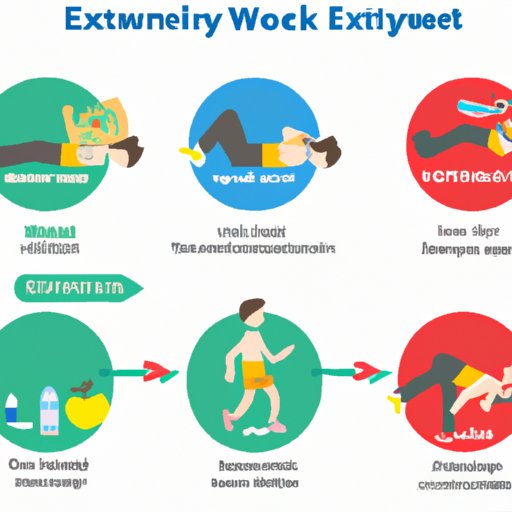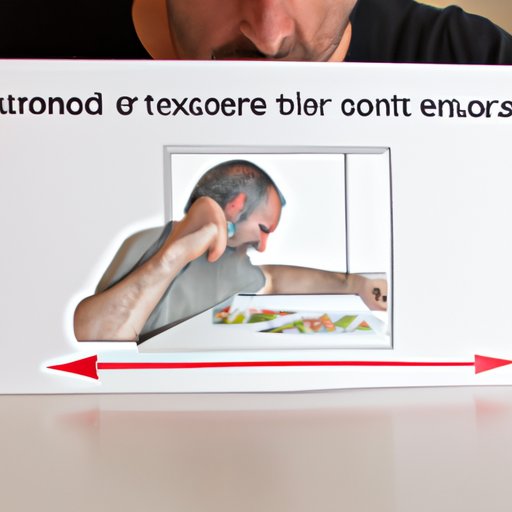
I. Introduction
If you’ve ever tried to exercise after eating a large meal, you might have felt discomfort or even pain due to cramps or digestive problems. In general, knowing the right time to exercise after a meal can have a big impact on your overall fitness and wellbeing. However, with so many opinions and guidelines out there, it can be confusing to figure out the optimal time to wait before working out. In this article, we’ll explore the science behind how and why you should wait to exercise after eating, as well as provide practical advice and tips for timing your meals and workouts for optimal performance and health.
II. The Science behind why you should wait to exercise after eating
When you exercise, blood flow and oxygen are directed to your muscles, and this means that less blood and oxygen are going to your digestive system. This can cause problems like cramps, indigestion, and even lead to more serious health issues. Additionally, your body needs to digest food properly to absorb the nutrients, and doing exercise immediately after eating can lead to incomplete digestion, which means that your body is not getting all the nutrients it needs to maximize performance. Therefore, you’ll want to wait a bit after eating before you start your workout routine.
III. A beginner’s guide to timing your meals and workouts for optimal performance
A good rule of thumb is to wait at least 30 minutes or longer after a meal before exercising. If you don’t wait long enough, you’ll be more likely to experience cramps, nausea, or even dizziness. In general, it is best to wait about 1-2 hours after a large meal before working out. However, if you’re planning on doing some light exercise after eating, you can try to wait around 30 minutes instead. Additionally, it’s important to stay hydrated as dehydration can also exacerbate the effects of exercising after eating.

IV. The dangers of exercising too soon after eating
Exercising immediately after eating can put you at risk of several negative health consequences. For example, your heart rate will increase rapidly, which can lead to potential risks if you have a heart condition. Additionally, your body requires a lot of energy to digest a meal, and if you exercise too soon after eating, you may not have enough energy to power your workout properly. Doing regular workouts shortly after eating can cause indigestion and cramping, which can be painful or even debilitating.
V. Tricks to help you feel less full before a workout
There are several tricks you can try to help you feel less full before a workout:
- Eat smaller, more frequent meals throughout the day, rather than big ones.
- Avoid high-fat and high-protein meals immediately before a workout.
- Stay hydrated by drinking plenty of water.
- Consider incorporating stretching, yoga or meditation before your workout to warm up your body and mind
- Remember to be patient with yourself, and give your body time to adjust to your new routine.
VI. 5 exercises to do right after eating to improve digestion and alleviate cramps during exercise
If you’re experiencing digestive problems during a workout, you can try some gentle exercises to help ease your discomfort:
- Walking or light jogging. Doing some cardiovascular exercise can help get your blood circulating again and alleviate your cramps.
- Yoga poses like downward dog, child’s pose, and eagle pose can help stimulate digestion and reduce bloating and cramps.
- The plank pose can help strengthen your core muscles, which can make you less susceptible to cramps during a workout.
- The bridge pose can help stretch your back muscles and reduce pressure on your digestive organs, thereby preventing cramps.
- Light swimming can also be beneficial for digestion while reducing cramps and promoting relaxation
VII. How to find your ideal window of time between eating and exercising
Although there are general guidelines for how long to wait after eating before exercising, everyone’s body is different, and it’s essential to find the optimal window of time that works for you. Try experimenting with different timing intervals, and pay attention to how you feel after each workout. Adjust accordingly and remember to give your body time to adjust to your new routine.
VIII. The best foods to eat before and after a workout for maximum energy and recovery
What you eat directly affects your performance during a workout, and the nutrients you consume in your diet are necessary to keep your body going. Some of the best nutrient-rich foods for pre- and post-workout meals include:
- Whole fresh fruits and vegetables, high in fiber-rich carbs, antioxidants, and vitamins/ minerals necessary for optimal performance
- Protein from lean sources, such as fish, chicken, turkey, tofu, legumes, or nuts to support muscle growth and recovery
- Complex carbohydrates, like brown rice, quinoa, and oats, which provide slow-releasing energy needed for longer, more extended workouts.
- Hydrating foods and fluids such as water, smoothies, and soups, that hydrate your body and provide the necessary vitamins and nutrients for improved recovery.
IX. Conclusion
In conclusion, it’s essential to find a reasonable time between meals and workouts that work best for your body. Planning meals and making sure to stay hydrated before, during and after the workout should be a priority for anyone interested in optimizing their workout performance and avoiding cramps and digestive discomfort. Hopefully, the tips and tricks we’ve mentioned in this article will give you the foundation you need to build a better, more effective, and focused fitness routine.




